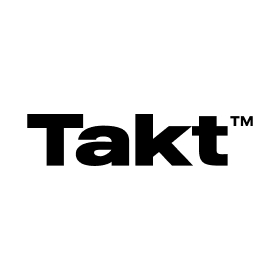
Balancing E-commerce SEO With Social Media Efforts
An eCommerce store needs a formidable online presence—of which a good website and quality products are just the beginning. The real challenge lies in letting probable customers know that your brand exists amidst the digital racket. This is where search engine optimization (SEO) and social media marketing come in.
While SEO lays a foundation for organic traffic through search engines, social media is what fosters brand awareness and allows for engagement or direct interaction with consumers. Both components of an ecommerce strategy are very relevant, but it’s paramount to strike the perfect balance.
This article will take a closer look into the balancing of the two for a better online presence.
Understanding E-commerce SEO
SEO serves as the virtual compass guiding potential customers to your online storefront. It encompasses a set of strategies aimed at improving your website’s visibility and ranking in search engine results pages (SERPs). By optimizing various elements of your site, you can increase the likelihood of appearing prominently when users search for products or services related to your business.
But effective eCommerce SEO isn’t merely about driving traffic; it’s about attracting the right traffic. This involves targeting keywords that align with user intent, ensuring that your website caters to the needs of those actively seeking the products you offer.
It’s always advisable to work with top ecommerce SEO agencies like Shark Digital that have an effective approach for eCommerce SEO through on-page and off-page optimization. This can include techniques such as technical SEO, content creation, distribution, and backlink building.
Elements of E-commerce SEO
To achieve success in eCommerce SEO, it’s essential to master a variety of interconnected strategies. These core elements work together to enhance your website’s visibility, usability, and overall appeal to both search engines and potential customers.
Keyword Research
First, any search engine optimization plan starts with keyword research, which determines the exact terms and phrases your target is using to conduct their searches. For eCommerce businesses, it means a high focus on product-based keywords, such as “women’s running shoes,” and long-tail keywords capturing more specific Product intent, like “best lightweight running shoes for women.”
On-Page Optimization
This is about creating compelling product descriptions, keyword-rich titles, and meta tags, and ensuring that product images are properly labeled and optimized. It’s also about well-structured, readable, scannable content, which ensures great user experience—a criterion indirectly boosting SEO rankings.
Technical SEO
While content is king, the technical aspects of your website play a crucial role in SEO. These include optimizing site speed as a slow-loading website can deter users and negatively impact rankings. Additionally, you should ensure mobile friendliness as around 60% of online searches are now conducted on mobile devices. Finally, address any crawl errors or broken links that could hinder search engine bots from indexing your site.
Content Marketing
Beyond product pages, creating informative and engaging content such as blog posts, buying guides, and how-to articles can attract potential customers and establish your brand as an authority in your niche. This can also be optimized for relevant keywords, further expanding your reach in search results.
Link Building
Earning backlinks from reputable websites is a powerful way to signal to search engines that your website is trustworthy and relevant. This can be achieved through guest blogging, creating shareable content, and building relationships with industry influencers. While link building can be a long-term endeavor, it’s an essential component of a comprehensive eCommerce SEO strategy.
Harnessing the Power of Social Media
Social media enhances the way eCommerce businesses connect with their customers, offering a dynamic platform to amplify brand visibility and drive sales. It’s more than just posting pretty pictures; it’s about strategically leveraging various platforms to achieve specific marketing goals.

Brand Awareness
Establishing a strong brand identity is essential for your business’s digital campaign. Social media platforms provide a visual and interactive space to showcase your brand’s personality, values, and unique selling propositions. Through eye-catching visuals, compelling storytelling, and consistent messaging, you can leave a lasting impression on your target audience.
Community Building
Unlike traditional channels of marketing, social media makes provisions for easier communication. These platforms put brands and consumers in close contact, opening special chances for building a community around your brand.
You can start by engaging active customers, either by responding to comments, having live Q&A sessions, or simply interacting with them to make them feel really attached to the brand on a personal level. Another major payoff of having a strong online community is that it can be an extremely rich source of user-generated content in the form of reviews, testimonials, and more.
Driving Traffic to Product Pages
While social media can be a powerful tool for brand building and engagement, it’s equally important to leverage it to drive traffic to your product pages and ultimately generate sales. Strategic placement of links in your social media posts, as well as shoppable posts on platforms like Instagram and Facebook, can create a seamless path for users to explore and purchase your products.
Integrating SEO and Social Media Strategies
Social media SEO can be used to create a powerful marketing strategy that boosts traffic and sales. Through this, eCommerce businesses can amplify their reach, engagement, and, ultimately, their conversions. Here’s how:
Promote SEO-Optimized Content
Your nicely written, SEO-optimized blog posts and product descriptions are better than simply holding a place on your website. Social media offers the perfect platform where this content should be shared in front of many.
Sharing links to pages, whether those are of articles, product pages, or landing pages, across multiple social channels can help drive huge traffic to a website. Moreover, social media posts are perfect in arousing interest and enticing your audience to click through to your site.
Market Research and Keyword Insights
Social media isn’t just a broadcasting platform; it’s a goldmine of valuable insights into your target audience. By monitoring conversations, hashtags, and trends related to your industry, you can gain a deeper understanding of your customers’ preferences, pain points, and interests.
These insights can help you identify trending topics and popular keywords, allowing you to tailor your content to align with user intent and drive more targeted traffic to your website.
Creating Shoppable Posts on Social Media Platforms
Several social media platforms now offer features that allow users to directly purchase products without leaving the app. Shoppable posts on Instagram and Facebook, for instance, make it incredibly convenient for users to browse and buy products they discover while strolling through their feeds.
Running Social Media Contests
Social media contests and giveaways are proven methods for boosting engagement and attracting new followers. By linking these promotions to specific product pages, you can direct a surge of traffic to your website.
To maximize the social SEO benefits of these campaigns, consider incorporating relevant keywords into the contest rules or descriptions. Moreover, encourage participants to share the contest on their own profiles, thereby extending your reach and potentially earning backlinks to your product pages.
Conclusion
The interplay between SEO and social media in eCommerce can’t be stressed enough. Knowing and putting into practice those strategies discussed in this article will yield full power over both channels in attracting customers for conversion.
As a result, an eCommerce business can execute long-lasting growth and create a firm position within the competitive online marketplace.

























